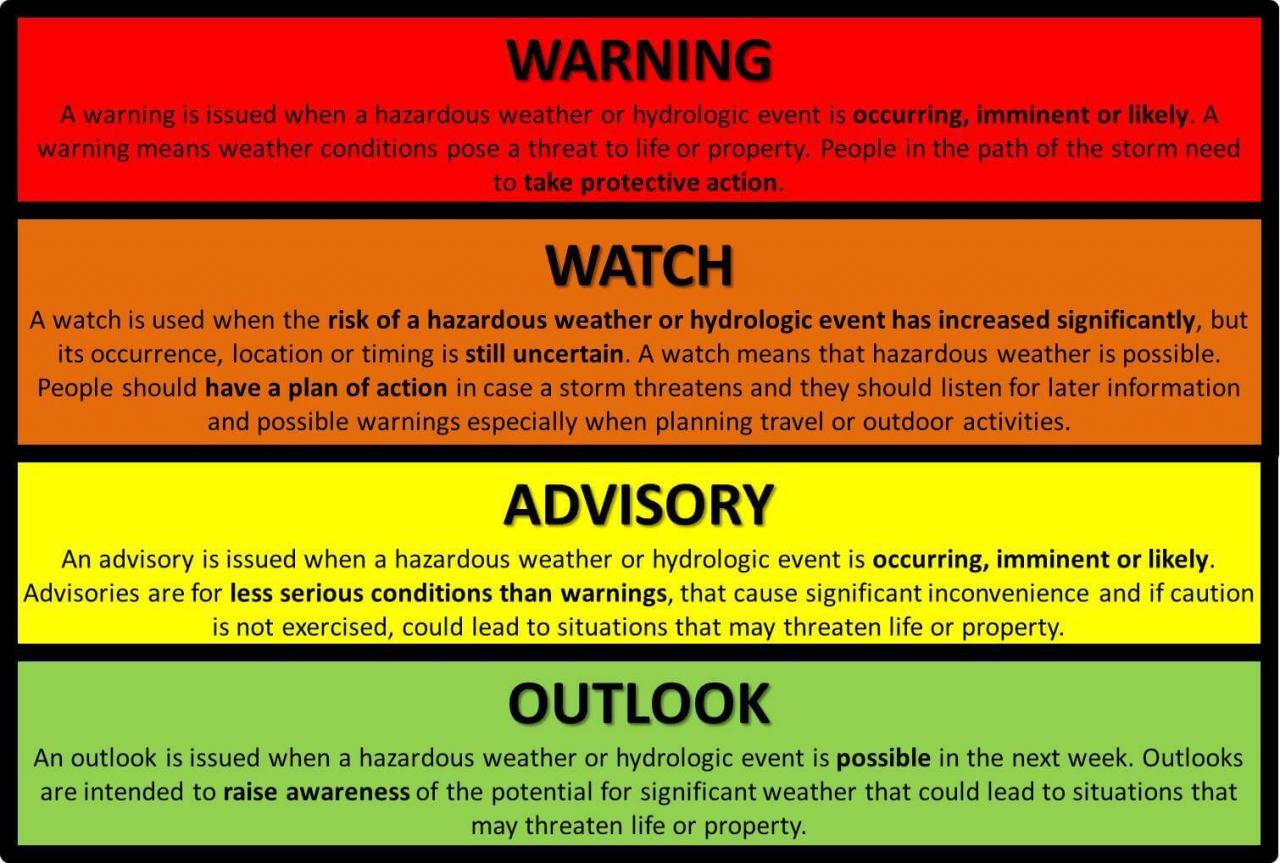
Is a watch or warning worse – In the realm of safety and preparedness, the distinction between a watch and a warning holds profound significance. As we navigate the complexities of emergency situations, understanding the nuances of these two alerts empowers us to make informed decisions that safeguard our well-being.
This exploration delves into the contrasting nature of watches and warnings, unraveling their severity, purpose, and implications for individuals and communities.
Watches serve as a heads-up, a signal that conditions are ripe for potential hazards. They provide ample time for preparation and precautionary measures, allowing us to stay vigilant and mitigate risks. Warnings, on the other hand, demand immediate action. They signify that a hazardous event is imminent or already underway, necessitating prompt and decisive responses to ensure safety.
Watch and Warning: A Comparative Analysis

In the realm of disaster preparedness, two critical concepts emerge: watch and warning. While both aim to alert the public to potential hazards, they differ significantly in their severity and purpose.
A watch signifies the possibility of a hazardous event occurring in the specified area within a defined timeframe. It serves as a proactive measure to heighten awareness and encourage precautionary actions.
In contrast, a warning indicates that a hazardous event is imminent or already underway. It demands immediate action to seek shelter or evacuate the affected area.
Use Cases
- Watch:Tropical storm approaching the coast, potential for flooding or high winds within 48 hours.
- Warning:Tornado confirmed on the ground, take cover immediately.
- Watch:Winter storm expected to bring heavy snowfall, prepare for power outages and travel disruptions.
- Warning:Flash flood warning issued for a specific area, evacuate low-lying areas.
Impacts and Responses
A watch prompts individuals to monitor the situation closely and make preparations, such as gathering emergency supplies, securing loose objects, and identifying evacuation routes.
A warning requires immediate action to protect life and property. It is crucial to seek shelter in a sturdy building or designated evacuation area, stay informed through official sources, and follow instructions from authorities.
Communication and Dissemination
Watches and warnings are disseminated through various channels, including weather alerts, news broadcasts, and mobile apps. Effective communication ensures that the public receives timely and accurate information.
Challenges include ensuring the reliability and accessibility of communication systems, particularly in remote or disaster-stricken areas.
Ethical Considerations, Is a watch or warning worse
Issuing watches and warnings carries ethical responsibilities. Authorities must balance the need to alert the public with the potential consequences of false alarms or delayed alerts.
False alarms can erode public trust, while delayed alerts can have catastrophic consequences. Therefore, it is essential to have clear criteria and procedures for issuing alerts.
End of Discussion

The choice between issuing a watch or a warning hinges on a meticulous assessment of risk factors, balancing the need for timely alerts with the potential for false alarms. Ethical considerations also play a crucial role, as authorities must weigh the consequences of delayed or inaccurate alerts against the public’s trust in the emergency response system.
Ultimately, the effectiveness of watches and warnings lies in their ability to empower individuals and communities to make informed decisions and take appropriate actions to protect themselves and their loved ones.
Expert Answers: Is A Watch Or Warning Worse
What is the key difference between a watch and a warning?
A watch indicates potential hazards, while a warning signifies an imminent or ongoing threat.
How do authorities determine whether to issue a watch or a warning?
They assess risk factors, considering the likelihood and severity of potential hazards.
What are the ethical responsibilities of authorities in issuing watches and warnings?
They must balance the need for timely alerts with the potential consequences of false alarms or delayed alerts, while maintaining public trust.